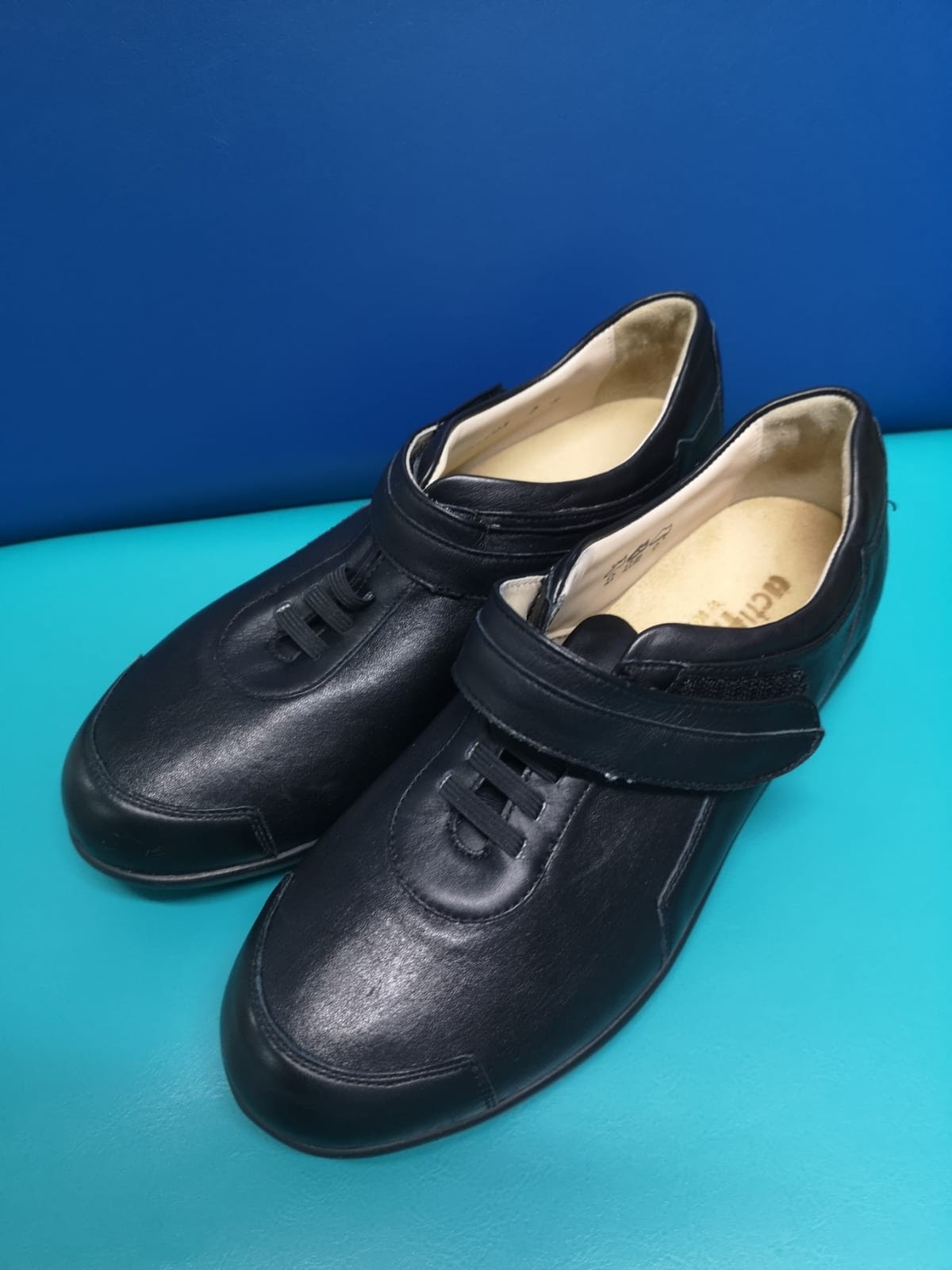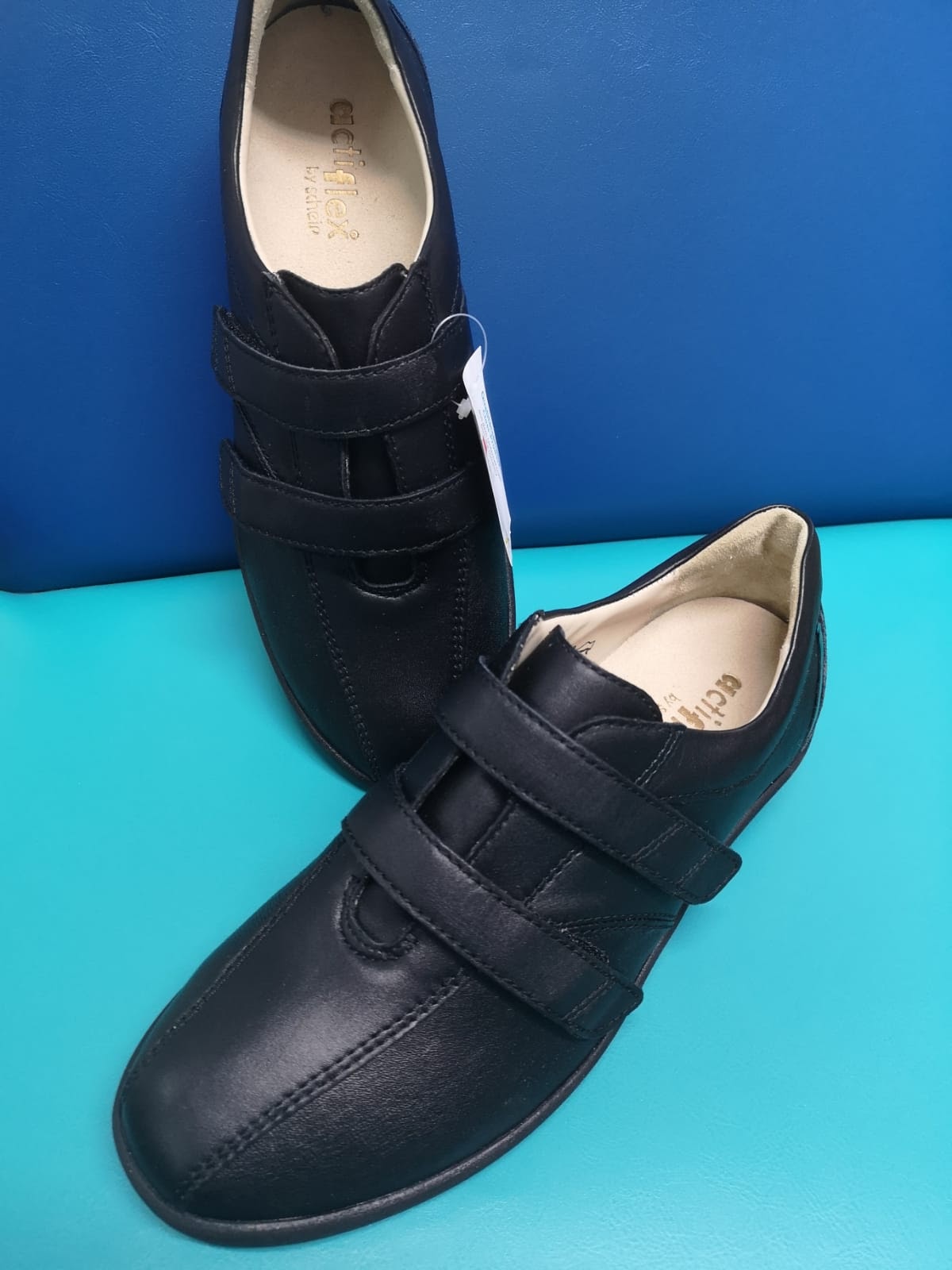Footwear and the high risk foot

Footwear and the high-risk foot
By Mary Moore & Gaivile Brickute
Pain is a gift! You might think I’m crazy to suggest such a thing because most people think of pain as anything BUT a gift. However, after the following incident, one of my patients was finally convinced of just that – pain is a gift. This patient has diabetes mellitus and as a result, has neuropathy in his feet. Neuropathy means nerve damage. This meant he could not feel his feet. It happens when there is hyperglycemia (high blood sugars) over a long period of time. On this particular evening, he decided to leave his car keys in his shoes so he could find them in the morning when he was going to work. That morning he put on his shoes as normal and made his way to his car. As he approached his car, he put his hand in his pocket to retrieve his keys to open the car door. When he found an empty pocket he remembered his bunch of keys was in fact – IN HIS SHOES!!! Luckily for him, he quickly removed the keys from his shoes before much damage was caused.
So what’s the big deal and what had this to do with footwear?
- An ill fitting shoe on a foot that has no feeling or a foot that has a structural deformity can cause friction and rubbing.
- 45-60% of all diabetic foot ulcers are caused purely because the person was unable to feel their feet (Frykberg et al. 2006).
- A person who cannot feel their feet is 7 times more likely to ulcerate (Boulton 2004).
5 tips to consider when looking for footwear for the ‘high risk’ foot or feet with lumps and bumps!!!!:
Is the shoe too small?
Many of us have had that ‘glass slipper’ experience of squeezing our feet into a shoe that doesn’t fit and we develop painful corn. The pain we feel may cause us to jiggle our foot around in the shoe or take off the shoe altogether in an effort to alleviate the pain. Now imagine not being able to feel our feet! This type of foot may have high-pressure areas, like a hammertoe or bunion. If we could not feel this pain or discomfort we may leave our shoes on for such a time that there is so much friction that a wound develops. This can become deeper especially if it is hidden below a layer of hard skin and we are unable to feel or see the wound.
Does the toebox accommodate the toes?
Diabetes, foot, and rheumatoid arthritis can cause the shape of your foot to change. This can result in things such as bunions or hammertoes. Despite wearing a correct shoe size, if the toe box is too narrow and not deep enough to accommodate your toes, friction can occur.
Style and weight of the shoe:
The person with a loss of feeling to their feet may find that they are unbalanced as they walk and this may result in falling. A study by Koepsell et al.(2004) found that certain shoe styles with a low, wide heel, along with thick, well-cushioned midsoles may decrease falls.
Is the upper of the shoe too hard?
The upper of the shoe is the material in the shoe that sits on the top of the foot. If this material is too hard or rough blisters can occur and infection can result. A high-risk foot should avoid pointed-toed shoes, slip-ons, high heels, patent leather that does not stretch, or hard plastic soles. Your Podiatrist will be able to advise you on this.
Is the shoe too wide and flat?
In our clinic, we often notice orthopedic footwear and some casual runners that are too wide, flat and a poor fit, often one or more sizes too big so slip off the foot at the heel and arch. Which is a fall risk. Moreover rubbing and chafing at the heel and toes in an effort to keep the shoes on can lead to blisters, ulceration and painful foot strain. We recommend avoiding these types of shoes particularly if you are keen to get back walking, but good news we have the solution to these problems
Actiflex Shoes
At Mary Moore Podiatry, we only stock shoes that are good for your feet. We stock Strive slippers, sandals, and shoes with built-in arch support. Our Actiflex range is particularly comfortable for high-risk feet. The Actiflex universal shoe comes in black, brown, or cream. These German-made shoes are stretchy in all the right places, to relieve lumps and bumps but still have plenty of support at the heel and arch. This universal Actiflex shoe is perfect if you have hammertoes or bunions, has great arch support, and a comfortable heel height for walking.
The Actiflex K shoe also available in black, cream, and brown is a K width and has ample space, and is a firm favourite for our patients with troublesome bunions. Your comfort, while you are active, is our priority and hope this blog and future blogs will help inform you of good footwear options and ways to get the best from your feet
If you would like to find out more about these shoes or other footwear, slippers, and our new runners collection, please give Ronni a call on 018623866 or else email, info@marymoorepodiatry.ie






